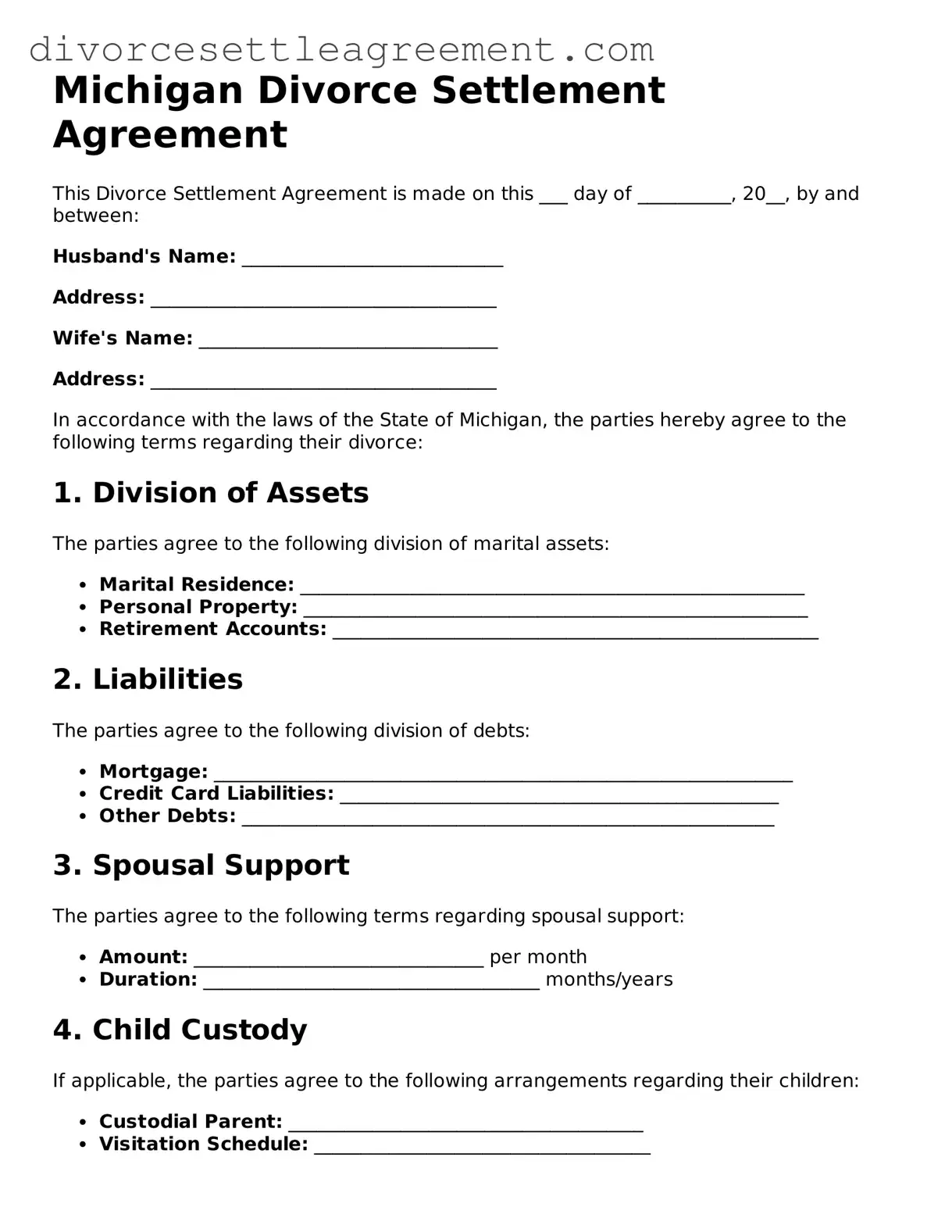What is a Michigan Divorce Settlement Agreement?
A Michigan Divorce Settlement Agreement is a legal document that outlines the terms and conditions agreed upon by both spouses regarding the division of assets, debts, child custody, and support during a divorce. This agreement serves to clarify each party's rights and responsibilities, ensuring that both individuals understand what has been decided. It can cover various aspects, including property division, alimony, and arrangements for any children involved.
How do I create a Divorce Settlement Agreement in Michigan?
To create a Divorce Settlement Agreement in Michigan, both spouses should first discuss and negotiate the terms they wish to include. It is beneficial to have open communication during this process to reach a mutual understanding. Once the terms are settled, the agreement should be drafted in writing. While there are templates available, it may be wise to consult with a legal professional to ensure that the document complies with Michigan laws and accurately reflects the intentions of both parties.
Is a Divorce Settlement Agreement legally binding?
Yes, a Divorce Settlement Agreement is legally binding once it is signed by both parties and approved by the court. This means that both spouses are obligated to adhere to the terms outlined in the agreement. If one party fails to comply, the other party can seek enforcement through the court. It is crucial to understand that any changes to the agreement after it has been signed typically require mutual consent and may also need court approval.
What happens if we cannot agree on the terms?
If both spouses cannot reach an agreement on the terms of the divorce, they may need to consider mediation or other alternative dispute resolution methods. Mediation involves a neutral third party who helps facilitate discussions and negotiations between the spouses. If mediation does not lead to a resolution, the case may proceed to court, where a judge will make decisions regarding asset division, custody, and support based on the evidence presented.
Can I modify a Divorce Settlement Agreement after it is finalized?
Yes, it is possible to modify a Divorce Settlement Agreement after it has been finalized, but certain conditions must be met. Both parties must agree to the changes, and the modifications should be documented in writing. Depending on the nature of the changes, court approval may also be necessary. Common reasons for modification include changes in income, relocation, or changes in the needs of children. It is important to follow the proper legal procedures to ensure that the modifications are enforceable.
